« For a Little Fun . . . | Home | Commitment! »
The Church as a Thin Place
By Mark D. Roberts | Thursday, May 21, 2009
Part 7 of series: Thin Places
Permalink for this post / Permalink for this series
In my last post in this series, I examined how Jesus impacts our understanding of thin places. If a thin place is a location where God’s presence can be experienced with unusual intensity, then Jesus himself was the ultimate thin place. Yet, as I noted in my last post, Jesus did withdraw from people to pray, suggesting that one’s location may have something to do with one’s relationship with God. Deserted places, free from noise and earthly demands, often can serve as thin places in our lives, even as they did in the life of Jesus.
Yet Jesus did not establish one or more sacred places to serve as portals to the divine from his followers. It is quite curious, actually, that key places in Jesus’ life did not take on sacred status among the first disciples. We have no reason to believe that they frequently returned to Jesus’ birthplace, or his tomb, or his own desert “retreats” in order to pray.
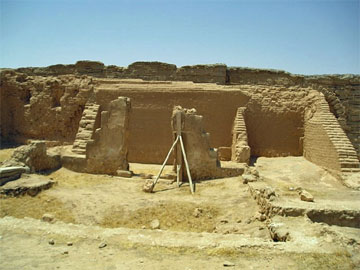 The fact that the early Christians didn’t have designated sacred places was perplexing to people in the Greco-Roman world. Virtually every recognized religion in this culture was identified by its holy places, people, and things. The holy places were the temples were people communed with the gods. The holy people were the priests, who handled the holy things, the sacrifices offered to the gods. But the early followers of Jesus met in houses or public gathering spaces and didn’t construct special buildings until at least two centuries after Jesus’ death and resurrection. When they did, these structures were not considered to be temples, at any rate. (Photo: The remains of one of the oldest church buildings, in Dura Europos in modern Syria. What you see is the foundation of the building. The best parts of the building exist in the Yale University museum. This church building was constructed around 200 AD.)
The fact that the early Christians didn’t have designated sacred places was perplexing to people in the Greco-Roman world. Virtually every recognized religion in this culture was identified by its holy places, people, and things. The holy places were the temples were people communed with the gods. The holy people were the priests, who handled the holy things, the sacrifices offered to the gods. But the early followers of Jesus met in houses or public gathering spaces and didn’t construct special buildings until at least two centuries after Jesus’ death and resurrection. When they did, these structures were not considered to be temples, at any rate. (Photo: The remains of one of the oldest church buildings, in Dura Europos in modern Syria. What you see is the foundation of the building. The best parts of the building exist in the Yale University museum. This church building was constructed around 200 AD.)
There are solid theological reasons for the absence of temples among the early Christians. The very first Christians continued to worship in the Temple in Jerusalem, but did not feel compelled to build a replacement when the Temple was destroyed in AD 70. They knew that, in many ways, Jesus had replaced the Temple. They could receive divine forgiveness through faith in Jesus, not through offering the appropriate sacrifices in the Temple.
Moreover, the early Christians thought of themselves as the new Temple. In 1 Corinthians 3:16-17, the Apostle Paul responds in this way to those who would threaten the unity of the Corinthian church: “Don’t you realize that all of you together are the temple of God and that the Spirit of God lives in you? God will destroy anyone who destroys this temple. For God’s temple is holy, and you are that temple.” Three chapters later Paul will use a similar metaphor in describing the body of the individual Christian as a temple of the Holy Spirit (6:19). But in 3:16-17, the temple is the church. In the church God makes his presence known through the Holy Spirit, who dwells in and among the gathered believers in Jesus.
So the first Christians did not build temples because Jesus had done, once and for all, part of what temples were supposed to do. Jesus opened up the way to intimate fellowship with God through his . When Jesus was no longer present on earth, he sent his Spirit upon his people. From Pentecost onward, the church was to become the thin place of the world. In the gathering of God’s people, God’s presence would be available to all. And as the church scattered into the world, it permeated the world with human “thin places,” so all people might experience the grace, love, and presence of God through his people.
At least this was the theory. It’s well know that the church hasn’t always played its thin place role very well. In my next post I want to suggest some ways the church can be a more consistently effective thin place in the world.
Topics: Thin Places |
2 Responses to “The Church as a Thin Place”
Comments
Thanks for your willingness to make a comment. Note: I do not moderate comments before they are posted, though they are automatically screened for profanities, spam, etc., and sometimes the screening program holds comments for moderation even though they're not offensive. I encourage open dialogue and serious disagreement, and am always willing to learn from my mistakes. I will not delete comments unless they are extraordinarily rude or irrelevant to the topic at hand. You do need to login in order to make a comment, because this cuts down on spam. You are free to use a nickname if you wish. Finally, I will eventually read all comments, but I don't have the time to respond to them on a consistent basis because I've got a few other demands on my time, like my "day job," my family, sleep, etc.
You must be logged in to post a comment.





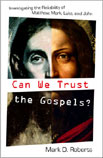


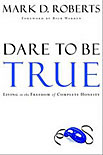


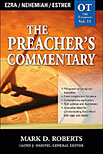

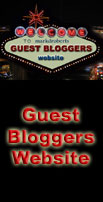

May 21st, 2009 at 5:36 am
That was really good! Thanks for sharing!
I just recently published a book about the prayers of the Apostle Paul, and thought you may be interested in checking it out. You can preview and even order the book at www.Amazon.com. Just type in Praying The Prayers of the Apostle Paul.
Thanks and God Bless,
casparkman@gmail.com
May 22nd, 2009 at 7:14 am
The Church is definitly not a thin “Place” but we could be a thin “people” when gathered together.